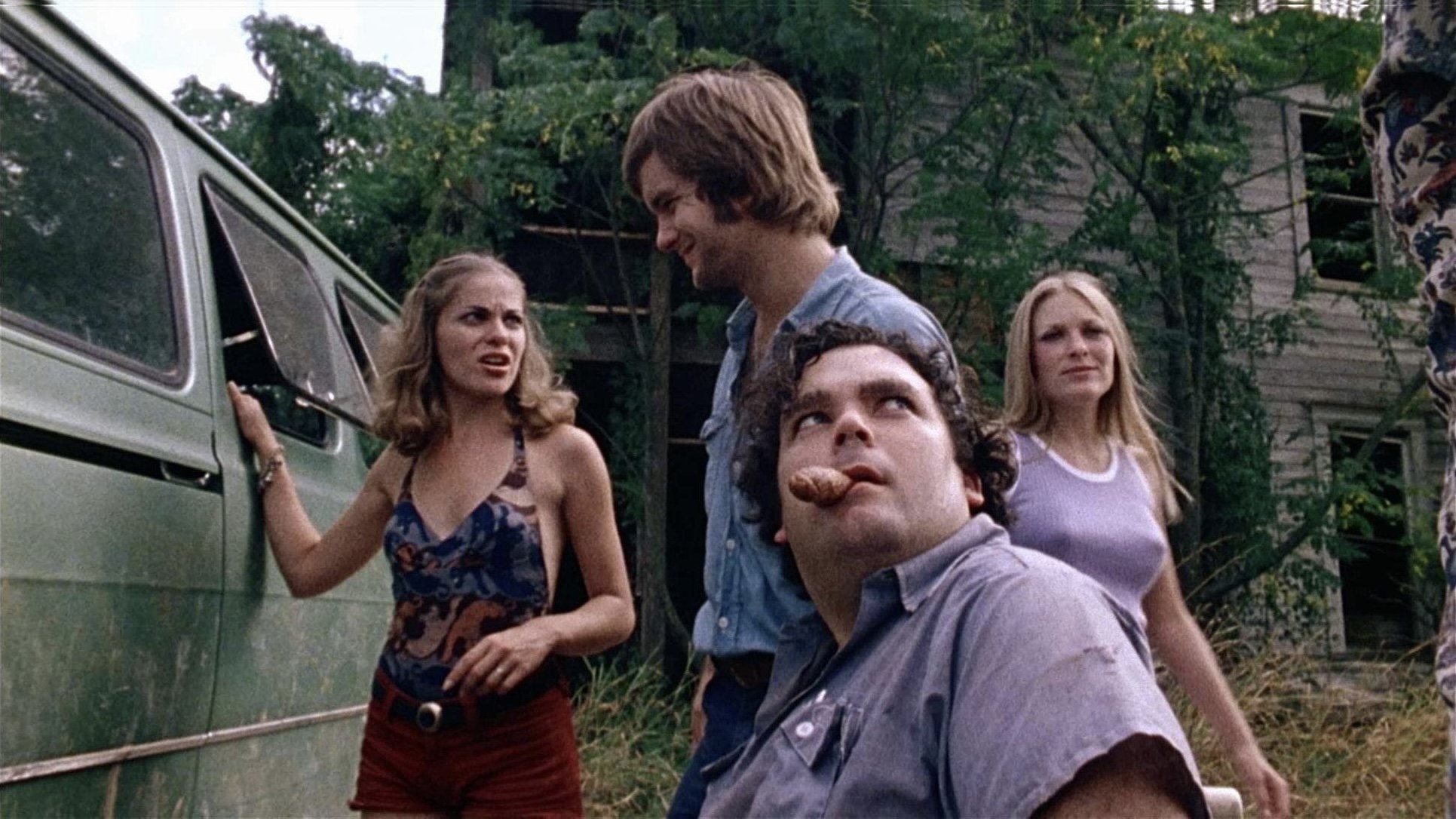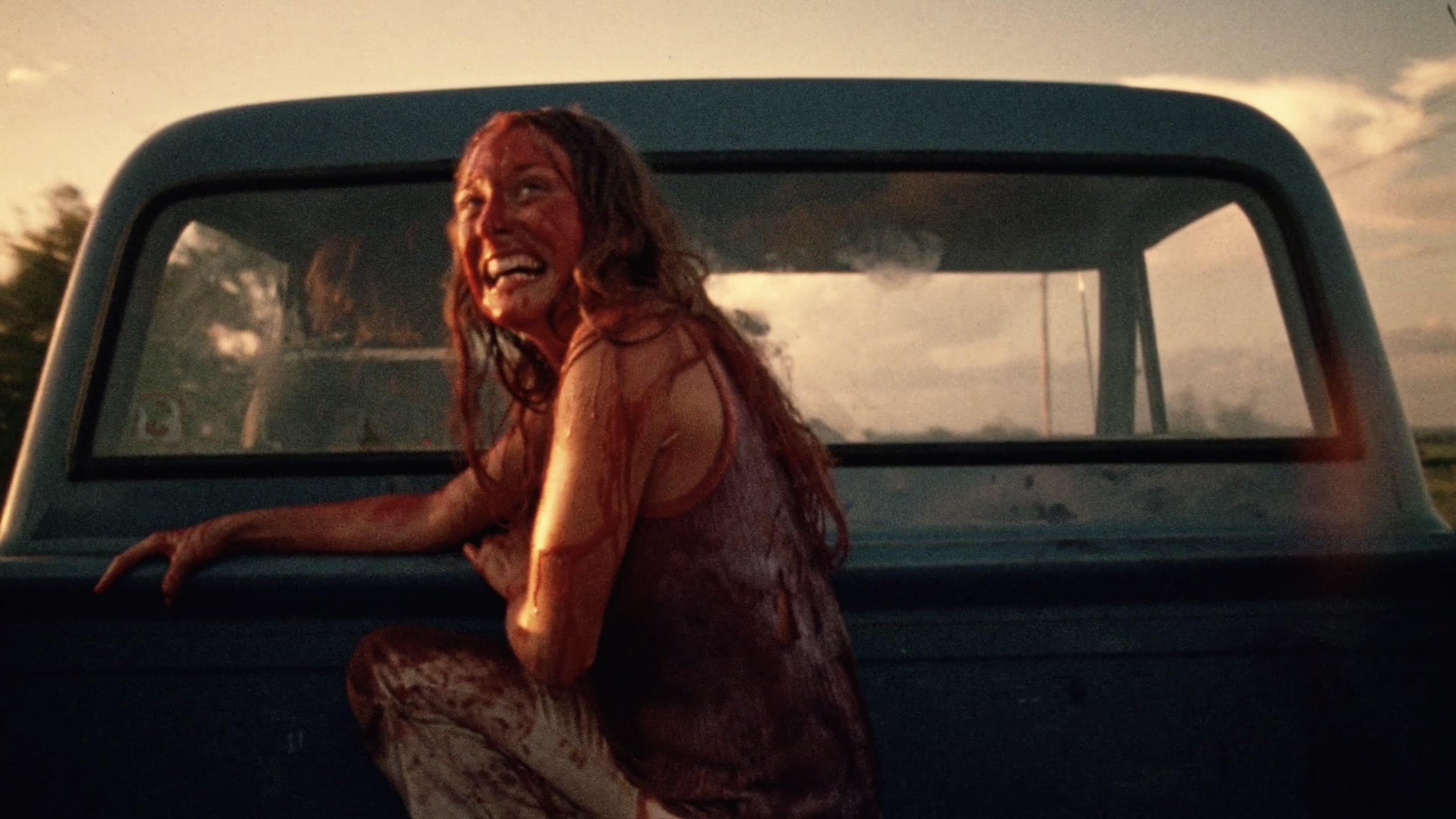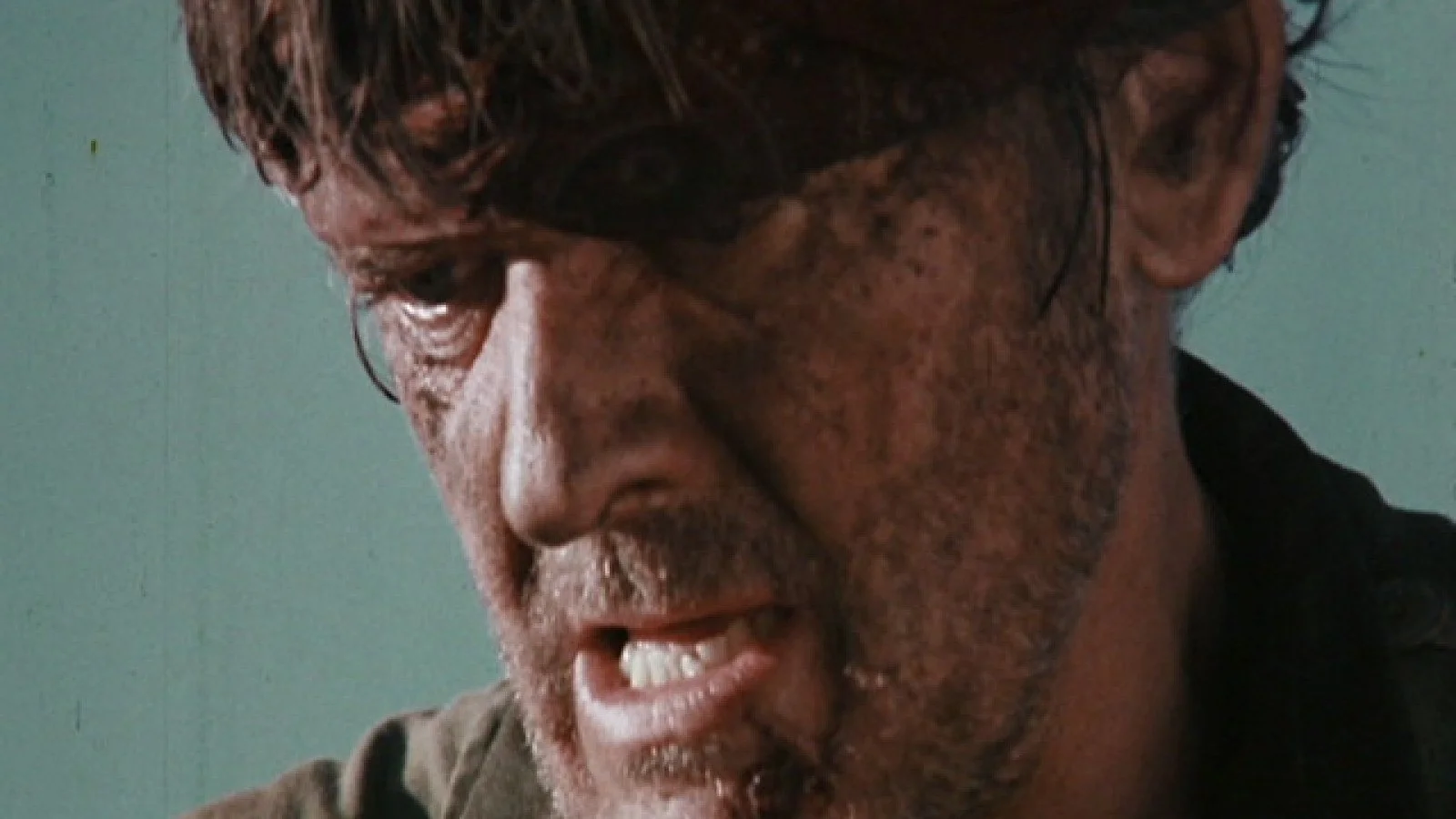Danse Macabre #5: Film Review — "The Texas Chain Saw Massacre" (1974)
In 1981, Stephen King published Danse Macabre, a work of non-fiction wherein the author acts as a tour guide through the history of horror. He addresses the social issues and political conflicts that have influenced creators over the years, and the ways creators have influenced each other.
King closes out the volume by recommending 96 films and 113 books released during the 1950-1980 period that he feels have significantly contributed to modern genre fiction. With this Fearsome Queer column, I’ll be making my way through those titles in no particular order.
To my amazement, I must confess (with tremendous shame) that my boyfriend—the man I love with my entire crusty heart—had never seen this… I mentioned on our evening walk how excited I am to dive into the Criterion Channel’s newly launched “’80s Horror” collection. So, when we got home, he opened Shudder (not the platform I’d mentioned, but it’s fine) and started scrolling. Under the Slashics section, he spotted Tobe Hooper’s (not of the ’80s) gruesome masterpiece and admitted that he’d never seen it. I don’t know how I’ve managed to be in a relationship with him for nearly six years and allow his Texas Chain Saw cherry to remain unpopped. Well, last night, I took my boyfriend’s virginity!
So as to give him the full 4D moviegoing experience, I put a thick smoked sausage in his mouth, tied him to a rickety old chair, and then helped myself to a little sausage. (Just kidding. (Or am I?)) Eventually, we started the film.
First of all, lemme tell you, this flick hits different after you’ve lived in Texas for awhile. Because although this was definitely not my inaugural viewing of TCM, it was my first time watching it as a Texan. Since moving here seventeen months ago: I’ve consumed plenty of BBQ, attended to the State Fair of Texas, visited the Fort Worth Stockyards, ventured out to Sweetwater TX to see the National WASP WWII Museum, and of course I’ve boldly been to the Round-Up Saloon on several drunken occasions. So, I’m sure it goes without saying, but Texas is a place with a great deal of culture—it’s reflected in the film, and the film has itself certainly influenced the culture in the years since its release.
Being here, I’m reminded of The Texas Chain Saw Massacre somewhat often. In fact, there was recently a tree service in our neighborhood called Leatherface Tree Services, and their logo is a silhouetted Leatherface! Plus, I indirectly think about the movie almost anytime I go to TMC, a gay bar in Dallas, because my mind can’t help but rearrange the letters to TCM, despite knowing it’s an abbreviation for The Mining Company. It’s probably a reference to butt stuff, but I’ve chosen to mentally rebrand it as a reference to the Canadian slasher My Bloody Valentine (1981). (Sidebar: If someone showed up to TMC on a kink night as the killer from My Bloody Valentine in the full miner get-up, including the gas mask… bitch, I would be fucking living.) TMC should embrace my revamp in real life actually, because slashers are a form of drag, honestly.
Leatherface himself is a prime example of a queered slasher. Some things are obvious, like his wig and the make-up on the mask of flesh he’s made to wear. But it wasn’t until this rewatch that I realized how much this movie plays with gender norms, too. In the all-male Sawyer clan, Leatherface appears to have assumed the role typically associated with a matriarch. While his father and brother work outside the home, Leatherface’s position is within. He is the domestic caretaker of the household, with one of his chief duties being the preparer of the, ahem, food. And, in a way, the titular chain saw is really a kitchen tool. We think of it as a dangerous object not meant for indoor use, but to Leatherface it’s an everyday item needed to feed his warped family.
As a collective, the Sawyers are a perversion of the idyllic American family—a Norman Rockwell painting gone very wrong. Betrayed by capitalism, they were turned unemployed when the local slaughterhouse shut down. By that point, killing was so ingrained in them that it’s practically all they knew how to do to stay afloat financially and keep food on the table. To them, the act of killing had become a craft, albeit a brutal one, worth savoring; what was once honest blue collar work morphed into a grisly compulsion. They also downright enjoy it, regardless of the animal under the hammer. They get off on Sally’s bloodcurdling screams as they’re taunting and torturing her. Her unrelenting cries for mercy are undoubtedly reminiscent of the wailing they heard in the slaughterhouse from the doomed livestock, which was absolutely music to their twisted ears.
Marilyn Burns, as Sally, delivers an all-time great final girl performance. The role is incredibly demanding, and Burns goes above and beyond. I’d forgotten the amount of screaming she does. It’s hard to listen to. I would not be surprised to learn that her vocal cords were irreparably scarred during filming. Her pained expressions and stomach-churning shouts of terror unquestionably had a hand in the Hostel-esque movies the next generation of directors would go on to make. In addition to her unrestrained portrayal, a lot of what helps Burns sell the situation is her ordinary appearance. Thankfully, in the 1970s, actors were allowed to look like regular people, which amplifies the gritty realism of the picture and thereby bolsters the performance on screen. Call me crazy, but being able to count the fillings in an actor’s teeth does something…
Like much of her cast, Burns does not have an extensive résumé. She never became a big star in the way Jamie Lee Curtis did post-Halloween (as one of our finest nepotism babies). Whether that was by her own choice or simply the nature of a heartless industry, I don’t know, but I kinda think it works in her favor here. As far as many people are concerned this is the only thing she ever did. She survived Leatherface and faded into anonymity. In that way, “Marilyn Burns” and “Sally” are damn near synonymous. Not being able to rattle off her credits somehow ups the horror, the fear we feel for her. It reminds me of Heather Donahue in The Blair Witch Project, how that performance feels so genuine. Removed for their respective films, it’s almost like they don’t exist. For me, an otherwise unrecognizable cast can lend a true crime-like vibe just as much as the filmmaking itself.
The Texas Chain Saw Massacre and The Blair Witch Project are also similar in that they both fooled tons of folks into perceiving their fiction as facts. The main difference, though, is Blair Witch masquerades as reality by utilizing then-uncommon found footage techniques, whereas Texas Chain Saw isn’t trying to convince us that its actors were really butchered on camera. It’s just graphic as hell. And I’m pleased to report that the kills are still super effective. I’ve always found the bludgeons particularly visceral; the sound work during those moments is unmatched. I grew up with TCM, so I can’t tell you how many times I’ve seen it, yet I still tighten up in anticipation when someone’s about to get it. It’s obviously make-believe—we’re not meant to think that these youngsters truly got beaten and dismembered—but all this did happen to somebody, right? Right?!
I know people who to this day will assert with total certainty—under oath in a court of law, even—that The Texas Chain Saw Massacre is 100% legit: This really took place, people died. Tobe Hooper accomplished this by giving the film a grindhouse sensibility; it’s so grimy you can almost smell the decay. He also, perhaps most importantly, lifted the methods used by the news media to ensnare the audiece’s attention and establish the ultimate suspension of disbelief. From the jump, Hooper plants the seed:
“The film which you are about to see is an account of the tragedy which befell a group of five youths… The events of that day were to lead to the discovery of one of the most bizarre crimes in the annals of American history, The Texas Chain Saw Massacre.”
John Henry Faulk has the radio voice to end all radio voices. When he reads that opening crawl (abridged above), he does so with gusto and grants the film credence. Back then, this was the manner through which a lot of people learned the news: a man with a deep, serious voice point-blank telling them “the truth.” And just like that, Tobe Hooper exploited people’s willingness to believe the worst. If the local 6 o’clock news could do it every evening, then so could he…
That’s the power of The Movies, baby!






